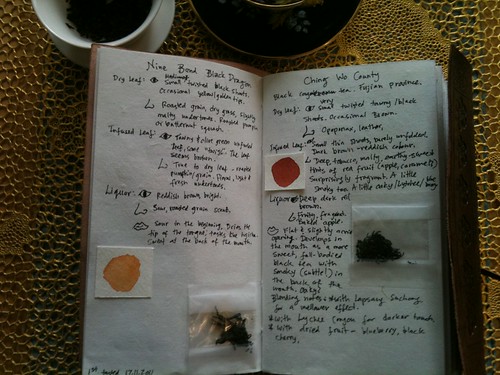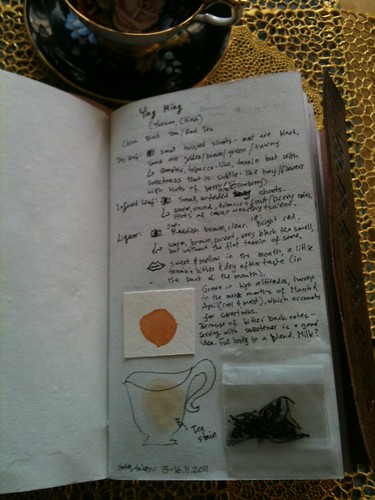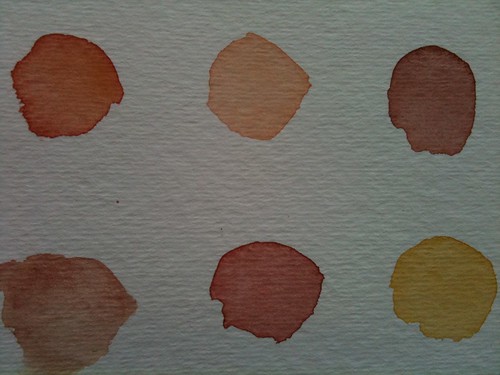Tea Journal: Nine Bend Black Dragon

As my tea journey continues, I refine my observations of relatively similar teas and find subtle differences that all of a sudden make them seem more special and different from one another.
I'm always puzzled as to the names that Chinese choose for their teas. They seem so far-fetched from what they seem to be. Wilted little leaves with names such as "Golden Monkey", "Snow Dragon" and even "White Peony" often leave me puzzled. One must have a very developed sense of imagination to come up with such names!
I'm still uncertain as to the origin of "Nine Bend Black Dragon", but perhaps it has something to do with its blackness, which is because the leaves are fermented prior to firing them. In any case, the dry leaf is medium-small black shoots with occasional golden or yellow tip. Their scent is of roasted grain, dry grass, with slightly malty undertones. It reminded me of roasted pumpkin or butternut squash!
The infused leaf turns into a tawny & olive green unfurled leaf, with some twigs. The leaf seems to be broken during its process. The scent is true to the dry leaf - roasted pumpkin or grain. There is a slight floral fresh undertone to it.
The liquor is reddish brown and bright. It has a sour, roasted grain scent. It's flavour is sour in the beginning. It dries the tip of the tongue and tastes very similar to hojicha (roasted Japanese green tea). I'm personally not fond of hojicha, but this tea is not bad, and the dry first impression improves in the back of the mouth where it is experienced as sweet!
Pairing suggestions: I can't get over the association of roasted butternut, so to me it has an immediate "fall" association. I would serve this with dinner of sage-roasted roots and vegetables (yams, Jerusalem artichokes, butternut squash, portobello mushroom), brown rice pilaf and spicy vegetable stew or even a curry. I can't really think of it as a dessert tea without going the pumpkin pie route... And I probably would do just that!
Blending notes: I doubt that I would personally use it in any of my tea blends; but because of its pumpkin association, it might work well in pumpkin-spice themed chai, along with a smoother Assam tea, for instance.



